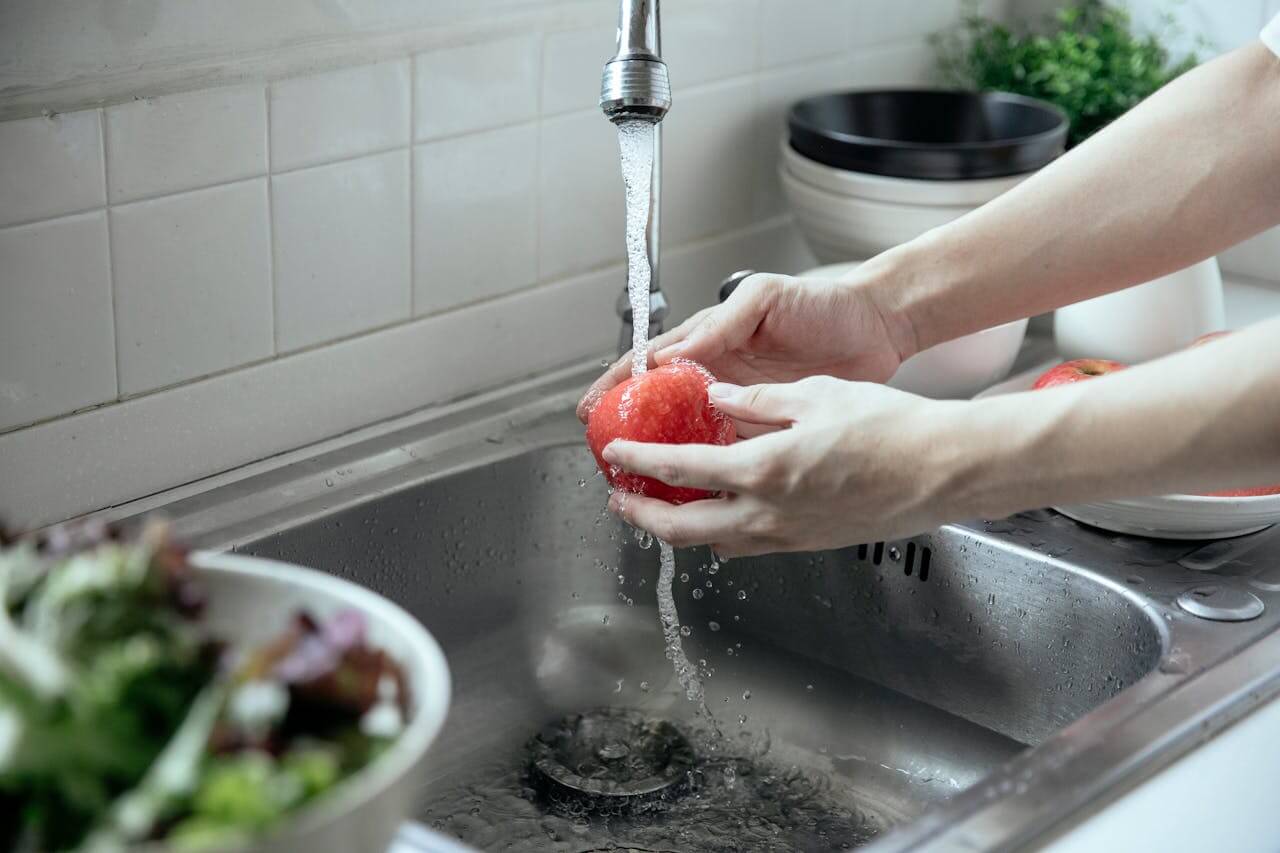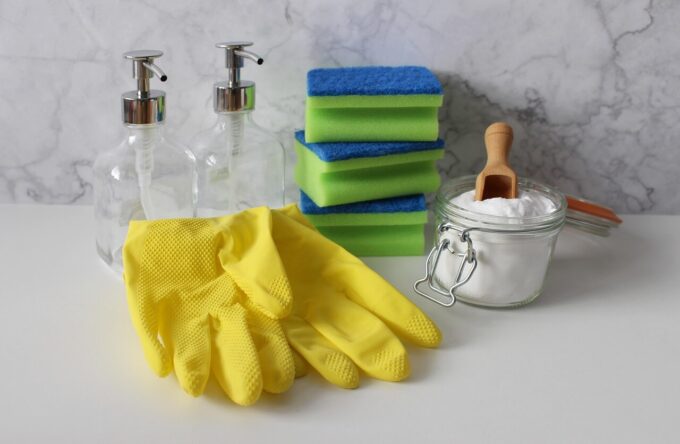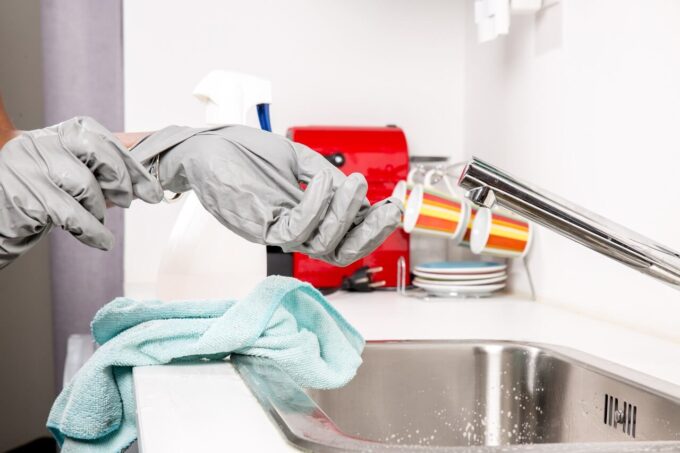
Your kitchen sink endures constant exposure to culinary remnants, washing residues, and moisture—making it a potential hotspot for unpleasant aromas and microbial proliferation. This high-traffic fixture processes everything from meal preparation waste to cleaning solutions daily, yet often receives insufficient maintenance attention.
Understanding Sink Odor Sources
Several factors contribute to sink deterioration and resulting odors:
- Culinary Residues and Oils – Microscopic food particles and cooking fats adhere to sink surfaces and plumbing, creating ideal environments for bacterial colonies
- Drainage Issues – Slow-draining water creates perpetually damp conditions that foster mildew development
- Microbial Communities – The combination of nutrient-rich residue and consistent moisture supports flourishing bacterial and fungal populations
Fortunately, maintaining sink freshness doesn’t require industrial-strength chemicals. Nature-derived solutions can effectively preserve both cleanliness and environmental health.

Material-Specific Cleaning Protocols
Different sink compositions demand tailored cleaning approaches to prevent damage while ensuring thorough sanitization:
For Stainless Steel Fixtures
- After each use, perform a quick cleanse with warm water and mild dish soap
- Weekly, distribute baking soda across all surfaces and gently buff with a non-abrasive sponge
- For persistent discolorations, create a dense paste by combining baking soda with minimal water, apply to affected areas, and allow 10 minutes of contact time before gentle scrubbing
- Complete the process by thoroughly drying with a microfiber cloth to prevent water marking
For Ceramic Basins
- Maintain daily cleanliness with gentle dish soap and lukewarm water
- Address stubborn marks by applying a mixture of baking soda and hydrogen peroxide, allowing 15 minutes of dwell time before removal
- Select only soft cleaning implements to preserve the ceramic finish from abrasion damage
For Natural Stone Installations
- Clean exclusively with mild detergents and soft implements
- Strictly avoid acidic substances like vinegar or citrus, which can deteriorate the stone matrix
- For gentle stain removal, apply a solution of tepid water and baking soda
Natural Deodorizing Techniques
When unpleasant aromas develop, target the source—typically accumulated debris within the drainage system—using these chemical-free approaches:
1. Alkaline-Acid Reaction Method
- Introduce half a cup of baking soda directly into the drain opening
- Follow immediately with one cup of white vinegar
- Allow the resulting chemical reaction to process for 10-15 minutes, breaking down accumulated residues
- Complete with a thorough hot water rinse to evacuate loosened debris
2. Citrus Abrasion Technique
- Bisect a fresh lemon and coat the exposed surface with coarse salt crystals
- Utilize this natural abrasive to scrub sink surfaces and drain openings
- This approach simultaneously removes residues while imparting natural citrus fragrance
3. Carbon Absorption Strategy
- Position a container of activated carbon near the sink overnight
- The highly porous carbon structure naturally captures airborne odor molecules
4. Repurposed Coffee Application
- Deposit used coffee grounds into the drain
- Allow one hour of contact time
- Rinse thoroughly with warm water
- The natural compounds in coffee neutralize persistent odors

Preventative Maintenance Strategies
Avoiding accumulation proves more efficient than addressing established blockages. Implement these preventative measures:
Substances to Redirect from Drain Disposal
- Cooking Lipids – These solidify within plumbing, creating progressive blockages
- Coffee Sediment – Combines with other residues to form persistent clogs
- Egg Remnants – Internal membranes adhere to pipe walls, collecting additional debris
- Starchy Foods – Continue absorbing moisture within pipes, expanding and creating obstructions
Proactive Drain Protection
- Install mesh strainers to intercept solid waste before entry
- Weekly, flush drainage systems with near-boiling water to dissolve accumulated fats
- Implement regular vinegar treatments—pour half a cup down drains, allow to process, then rinse thoroughly
Systematic Maintenance Schedule
Maintaining sink freshness requires minimal effort when approached systematically:
Daily Practices
- Perform a thorough rinse after each use to remove lingering particles
- Eliminate standing moisture with microfiber cloths to prevent mineral deposits
- Regularly replace cleaning implements to prevent cross-contamination
Weekly Maintenance
- Conduct comprehensive surface cleaning using mild abrasives like baking soda
- Apply natural disinfectants such as vinegar or hydrogen peroxide
- Implement odor prevention measures with citrus and baking soda treatments
By integrating these techniques into your household routine, your kitchen sink will remain a hygienic, pleasant-smelling fixture that enhances rather than detracts from your culinary environment. Proper maintenance not only improves aesthetic and olfactory experiences but also extends the functional lifespan of this essential household fixture.
Latest Posts
How to Clean Your Walls Without Damaging the Paint
Reality check—walls accumulate debris over time. From oily handprints around switch plates...
3 Mins readHow to Deep Clean Your Kitchen in One Afternoon
Face it—thoroughly scrubbing your kitchen rarely tops anyone’s list of enjoyable activities....
3 Mins readHow Often Should You Really Be Cleaning These 10 Things?
(Unexpected insights for a healthier home environment) Most households maintain some form...
3 Mins readHow to Attract Pollinators to Your Backyard Garden
Dreaming of a vibrant, flourishing garden space? Whether you’re cultivating vegetables, nurturing...
3 Mins read











